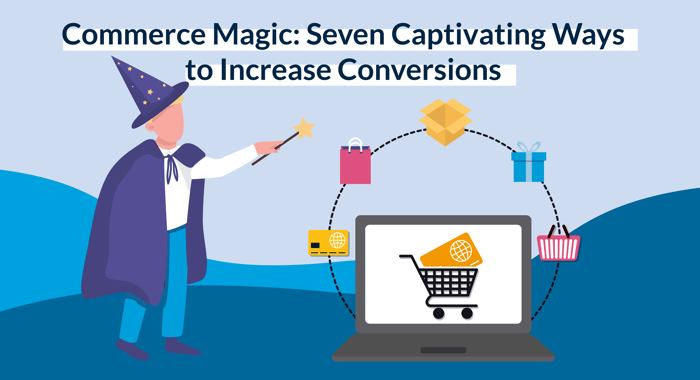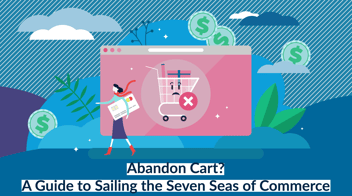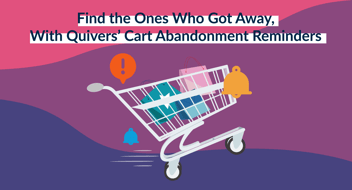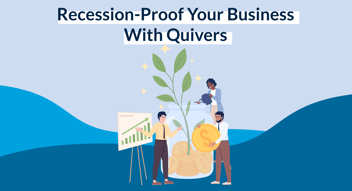Commerce Magic: Seven Captivating Ways to Increase Conversions

From the enigmatic Harry Houdini to the mesmerizing talents of David Copperfield and David Blaine, the greatest magicians have always stuck to one rule: Never reveal the secret behind the trick.
While such unwavering dedication to the craft is admirable, those in the ecommerce industry are grateful not to be bound by a similar oath.
In today's information-rich age, some specialty brands are achieving remarkable conversion rates on their websites. However, due to the vast amount of conflicting advice available, others find themselves paralyzed by indecision.
That’s precisely why we’ve stepped behind the magic curtain and hand-picked seven of the most effective methods for brands to increase conversions.
Seven Surefire Ways to Increase Conversions
1. Reducing Stock-Outs
A simple way to reduce stock-outs is by increasing inventory, but while magicians seem able to pull rabbits out of hats with relative ease, conjuring new stock out of thin air remains impossible.
Specialty brands looking to eliminate stock-outs should focus their efforts on forging deeper bonds with those businesses already carrying their products, their partnering retailers. By doing so, they can tap into the retailers' existing stock and expand the inventory accessible for orders placed on their website.
Think of it this way. Previously, going out of stock of a flagship product in the central warehouse spelled disaster for the brand’s conversion rate. Now, with retailers positioned to fulfill orders from the brand’s website using their own stock, brands can eradicate those dreaded out-of-stock messages — arguably one of the most formidable barriers to conversions.
2. Speeding Up Delivery & Cutting Shipping Fees
Over 69% of consumers say they’re less likely to shop with a brand if delivery isn’t timely, and 75% of shoppers are unwilling to pay more than $10 for delivery.
As long as teleportation remains a classic magician’s illusion, moving things from one place to another will inevitably present challenges. Thankfully, brands can overcome these challenges by enlisting fulfillment locations that are closer to consumers.
How does it work? By effectively giving the product a “head start” on its journey to the consumer’s doorstep. The fulfiller is local, which means the product is already closer to the consumer than it would have been in the brand’s main warehouse.
3. Offering BOPIS
BOPIS (Buy Online, Pick Up In-Store) and Curbside Pickup have moved beyond fancied fulfillment options to a full-on consumer expectation since the pandemic.
Over 75% of consumers have used BOPIS and 50% decide where to shop online based on whether or not they can pick up in-store.
While the benefits of such a popular fulfillment option on conversion rates are probably clear, it’s worth pointing out that BOPIS orders also have a higher average order value than traditional ecommerce orders.
4. Leveraging Ambassadors
Consumers trust influencers 94% more than friends or family when making shopping decisions, which goes some way to explaining why influencer and ambassador marketing offers the second-highest ROI of any marketing trend in 2023.
It's understandable that some brands might feel apprehensive about collaborating with the diverse range of individuals who describe themselves as influencers, ambassadors, affiliates and pros. However, rather than letting any doubts deter them, brands should use them as motivation to extract the maximum value from influencer and ambassador programs. After all, these programs stand as one of the most effective means to transform indecisive shoppers into satisfied and loyal customers.
5. Selling Internationally
While this may sound obvious, one way to increase conversions is to widen the audience of consumers who can actually make purchases on the brand’s website.
A whopping 88% of consumers prefer to buy directly from a brand, but if they can’t do that, they soon make like Houdini and disappear — before showing up at a competitor’s site. That’s just as true for international shoppers as it is for domestic consumers.
6. Providing a Buy Now, Pay Later (BNPL) Option
Considering the current economic climate, it’s no surprise that Buy Now, Pay Later (BNPL) is such a popular way to pay. Around 60% of consumers have already used a BNPL option, and that number is set to rise in the coming years.
Letting consumers pay in manageable, interest-free installments not only boosts average order value but also increases conversion rates by as much as 20-30%.
While there are a range of popular BNPL services such as Klarna, Paypal and Afterpay, a significant 61% of BNPL users say they’d rather use a service directly offered on a brand’s website than go through a third party.
7. Reducing Cart Abandonment & Increasing Repeat Purchases
Cart abandonment is widespread, with consumers ditching almost 70% of their online shopping carts. While this behavior is never going to disappear entirely, cart abandonment reminders serve as a great tool that can increase conversions by up to 18%.
Similarly, sending back-in-stock notifications that alert consumers when fresh inventory is available can give brands an impressive conversion rate of 23%.
It's worth noting that 73% of shoppers admit that most of their purchases are spontaneous. But when a checkout process is complicated, spontaneity soon gives way to frustration. Brands looking to increase conversions must offer a simple, streamlined checkout process.
Omnichannel Magic
You’ve now read the seven steps, but how do you put them into action? By adopting an omnichannel approach to both sales and fulfillment.
Through cultivating stronger partnerships with retailers and other fulfillers, specialty brands can expand stock availability, speed up delivery, and offer consumers sought-after omnichannel fulfillment options like BOPIS.
As its name implies, omnichannel brings all the parts of the commerce ecosystem together. That’s why specialty brands adopt an omnichannel approach to connect with profitable ambassadors and influencers, and why going omnichannel can help make international expansion less complicated.
Comprehensive omnichannel software suites provide a range of consistently updated solutions, spanning everything from payment processing to tools that reduce cart abandonment.
While major brands and retailers like Walmart and Target have been championing omnichannel strategies for some time, many specialty retailers don’t have the same resources at their disposal.
During challenging economic times, it’s the early adopters of innovative solutions that lead the way. Fortunately for specialty retailers, there are ways to make sales and operations omnichannel that don’t break the bank.
Quivers offers an award-winning toolkit that helps brands launch omnichannel endeavors and reach their conversion goals while avoiding compatibility issues and excessive costs.
The Omnichannel Toolkit empowers brands to achieve an astronomical rise in retailer-fulfilled, direct and wholesale sales. There’s no need for a magic wand: Quivers uses a range of sophisticated software to convert a high percentage of website traffic into purchases.
Nearly 90% of shoppers expect brands to offer omnichannel experiences. With the Quivers Omnichannel Toolkit can you turn your operations omnichannel, provide in-demand fulfillment options, and benefit from the lucrative ambassador branch — without making significant investments or changes to operations.
The secret is out. Quivers is your shortcut to a mind-boggling rise in conversions. Want to learn more? For a limited time only we’re offering you a free conversion audit from one of our commerce experts. Let your specialty brand’s conversion transformation begin today.



